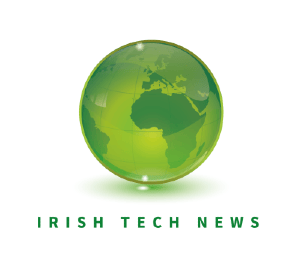Are Smart Cities the Answer To Rising populations?
By Kevin Curran, Senior IEEE Member and professor at Ulster University
It’s nothing new that worldwide, populations are growing – the UN estimates that the global population will reach 50 billion by 2055. Humans are also living longer and are increasingly congregating in metropolitan areas. Today, there are 47 megacities, or cities with more than 10 million inhabitants, and this figure is always increasing. The size, population number, and complexity of these urban spaces creates many social and environmental challenges. With a correlation between the size of cities and electricity, heating, water, industrial fuel usage and waste production it’s apparent that the consumption of resources, efficiency and operational effectiveness of a megacity comes down to its infrastructure.
Technology offers the solution to this. Smart city technologies, when implemented correctly, can scale, allowing growing populations to be serviced more easily. While a truly smart city is designed from the ground up, many cities are now integrating technologies that operate over the Internet of Things (IoT) to improve public services. Some argue that the future growth of the planet’s population can only be sustained through scalable smart city technology.
A smart city involves integrating IoT into traditional infrastructure. BigBelly, for example, is a solar-powered bin that can compact its contents to increase its effective capacity fivefold, and alert rubbish collection services when it is full. Because of this, it requires less frequent collection visits than conventional bins – meaning rubbish collection services can save time, use less fuel and produce less air pollution as each visit is efficient, effective and necessary.
Indeed, to ensure cities better accommodate growing populations means connecting smart infrastructure in existing infrastructure’s place, or otherwise designing anew from the ground up. New technologies must be designed and used with resource stability and large numbers of inhabitants in mind.
Issues that arise in megacities, such as air pollution and safeguarding natural resources, require multifaceted solutions because they are so complex that they’re difficult to conceptualise. As such, data collection is the first step towards understanding, and mitigating, the issues. This is where the IoT and smart sensors can play a critical role.
Sensor-enabled devices are already helping to monitor the environmental impact of cities, collecting details about sewers, air quality, rubbish, and energy consumption. But, connected technologies can also be used to increase awareness and visibility into individual energy and resource use. IoT-enabled thermostats can make transparent decisions to turn heating on based on fluctuating energy costs. Moreover, smart IoT water management sensors, in combination with data analytics programmes, can provide consumers with increased visibility into the amount of water they use. Devices like smart meters that increase visibility into usage have been proven to save money, as well as conserve natural resources.
While existing connected devices are helping, the issue is true smart cities have to be designed from the ground up rather than overlaid onto cities that have buildings and infrastructure from decades, or even centuries, ago. There is still too much legacy infrastructure, too many providers – such as established telecommunications, energy, transport companies – holding back the true emergence of smart cities.
On top of this, there are also problems too when a city relies on a central technological hub to control its core infrastructure. Already, many cities have been paying large amounts when subjected to ransomware attacks. While pilots in many aspects of smart cities are being rolled out around the world, none can claim to be smart but pockets of many cities’ infrastructure are becoming smart.
The potential of connected technology and smart cities is huge and goes far beyond this. There are still issues that aren’t fully understood or easily addressed but as new technologies emerge and are carefully applied, cities will be able to better manage evolving issues and their environmental impact. Moreover, as more devices become internet-enabled and machine learning and data processing improves, we are likely to see increasingly more innovative ways that the IoT will contribute to managing growing megacities whilst reducing their impact on resources.
More information about Irish Tech News and the Business Showcase
FYI the ROI for you is => Irish Tech News now get over 1.5 million monthly views, and up to 900k monthly unique visitors, from over 160 countries. We have over 860,000 relevant followers on Twitter on our various accounts & were recently described as Ireland’s leading online tech news site and Ireland’s answer to TechCrunch, so we can offer you a good audience!
Since introducing desktop notifications a short time ago, which notify readers directly in their browser of new articles being published, over 16000 people have now signed up to receive them ensuring they are instantly kept up to date on all our latest content. Desktop notifications offer a unique method of serving content directly to verified readers and bypass the issue of content getting lost in people’s crowded news feeds.
Drop us a line if you want to be featured, guest post, suggest a possible interview, or just let us know what you would like to see more of in our future articles. We’re always open to new and interesting suggestions for informative and different articles. Contact us, by email, twitter or whatever social media works for you and hopefully we can share your story too and reach our global audience.
If you would like to have your company featured in the Irish Tech News Business Showcase, get in contact with us at [email protected] or on Twitter: @SimonCocking
More about Irish Tech News
Irish Tech News are Ireland’s No. 1 Online Tech Publication and often Ireland’s No.1 Tech Podcast too.
You can find hundreds of fantastic previous episodes and subscribe using whatever platform you like via our Anchor.fm page here: https://anchor.fm/irish-tech-news
If you’d like to be featured in an upcoming Podcast email us at [email protected] now to discuss.
Irish Tech News have a range of services available to help promote your business. Why not drop us a line at [email protected] now to find out more about how we can help you reach our audience.
You can also find and follow us on Twitter, LinkedIn, Facebook, Instagram, TikTok and Snapchat.

